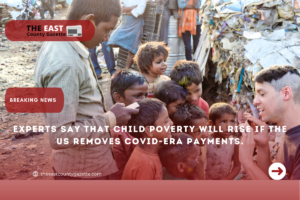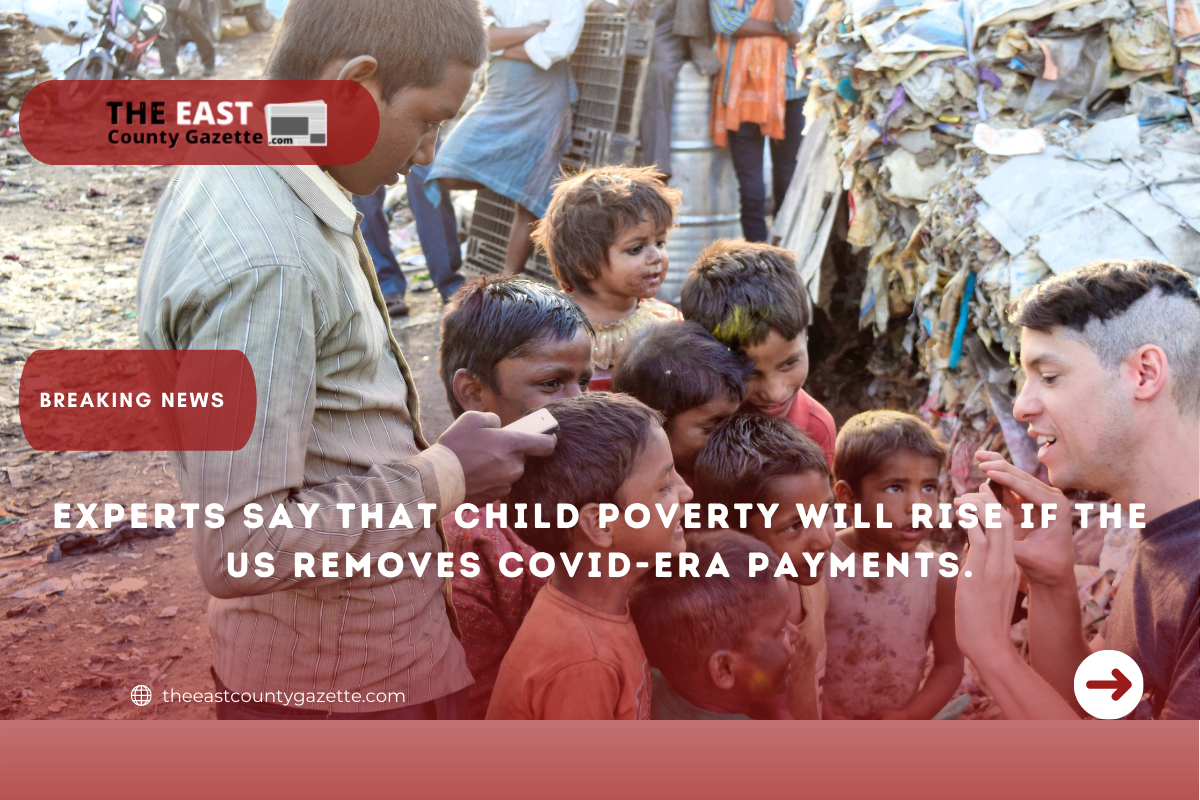Because of the Covid-19 pandemic, the US child poverty rate drastically decreased, but experts warn that leaving such measures to expire could undo these historic advances.
Youngsters’ well-being increased substantially during the pandemic, despite the fact that millions of children were affected. According to predictions, the percentage of children living in poverty will drop from 14.2 percent in 2018 to less than 5.6 percent in 2021.

As a matter of fact, child poverty in the United States is not inevitable.” Lisa Chamberlain, professor of pediatrics at Stanford and co-author of a paper published on Monday in the journal Jama Pediatrics, said, “It is a decision,” Chamberlain told CNN. There is no question of how to accomplish this, but rather a question of political will.
The fundamental force behind these alterations was the child tax credit, which was responsible for an estimated 40% reduction in child poverty. It began disbursing monthly payments to families in July. The vast bulk of this money went for basic needs including food, clothing, housing, utilities, and education.
Additionally, the plan contained three stimulus checks, a ban on evictions and higher unemployment benefits, as well as additional assistance for food, through the Supplemental Nutrition Assistance Program (Snap), and housing.
There was a “historic drop in child poverty,” Chamberlain explained.
As a result, research shows that roughly one-third of all children would be living in poverty.
Still, the benefits “have not just prevented what could have been the worst-case scenario in terms of poverty rises but actually resulting in dramatically lower poverty rates than we’ve seen in decades,” Megan Curran, policy director at Columbia University’s Center on Poverty and Social Policy, told the New York Times.
She believes that the child poverty rate in the United States in 2021 may have been even lower than in 2020, which was the lowest since the 1960s when the US Census Bureau began collecting data. “Wow, that’s quite significant.”
As a result of the expiration of the child tax credit in January, the number of children living in poverty rose by 41% over December, according to the center’s estimates of 3.7 million youngsters.
Between December 2021 and January 2022, “there was essentially a cliff,” says Curran. The last two months have been difficult for families who haven’t received their payments.
It’s becoming increasingly difficult for people to buy food and pay their rent, especially as food and energy prices have climbed. It’s a double whammy for them, with the loss of funds and the rise in prices for essentials,” added Curran.
Joe Manchin, a Democratic senator in the United States Senate, opposed the Build Back Better measure because of the child tax credit, one of the reasons he listed for opposing it.
Research suggests that eliminating child poverty has a significant economic impact. Hunger, poor health, lower educational attainment, and fewer career opportunities are all consequences of poverty.
As Chamberlain put it, “not having adequate food and stable places to live” affects students’ capacity to genuinely engage in school. A student’s final potential of being able to have a successful job and contribute is determined by his or her ability to participate fully in the classroom and in the educational process.
Because of decreased adult productivity and greater health care and criminal justice expenditures, child poverty costs the United States between $800 billion and $1.1 trillion every year, according to the National Academy of Sciences (NAS). According to academics, poverty reduction strategies have strong moral and economic justifications.
It costs the United States “an amazing amount every year” because of child poverty, according to Curran. Child poverty must be drastically reduced in order to benefit children and their families on a personal and family level as well as economically.
Researchers found no obvious impact on employment as a result of the credit opponents’ claims, contrary to what some opponents have claimed.
Using this money for childcare would allow parents to work more, which would have been especially beneficial during the pandemic when many informal caregivers, like grandparents, died or were disabled.
According to Chamberlain, “We have seen tremendous numbers of women leave the workforce because of the number of incapacitations from Covid.”
A major setback has been posed by the expiration of the child tax credit.
Chamberlain stated, “I would not claim that it wipes out the gains.” Because of this, we are no longer able to achieve those gains.
It was a win-win situation for both the families and the children who received the credit: They had more food, more stable housing, and less stress.
“If they can keep this going, we’ll keep looking at it.”
“It’s unusual for a single strategy to show such clear and dramatic improvements,” Curran said of the program’s rapid effectiveness as proof of concept.
This “high poverty, growing poverty” is “absolutely reversible,” she proclaimed. To put it simply, “We’ve seen it work.”
… we’d like to ask for a small favor. Daily, tens of millions of people around the world rely on the Guardian for unbiased reporting, and we now have subscribers in 180 countries.
Access to knowledge based on science and truth, and analysis based on authority and integrity is something we feel everyone should be able to access. It was for this reason that we decided to extend our reporting to all readers, regardless of where they live or how much they can afford to pay.
As a result, a larger number of individuals will be empowered to take real action by being more informed, united, and motivated.

